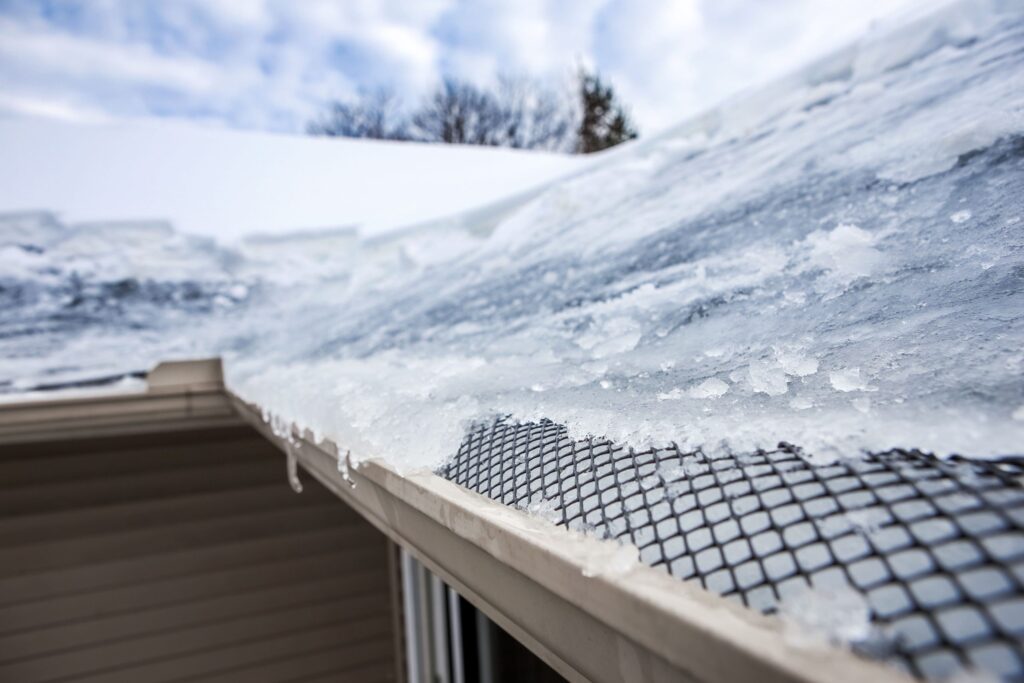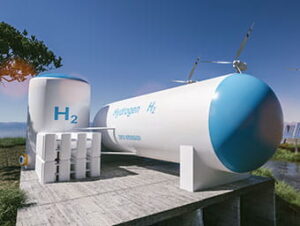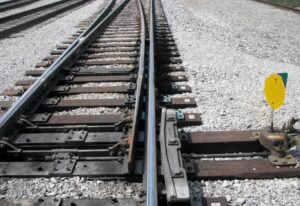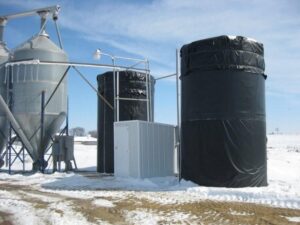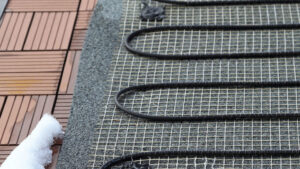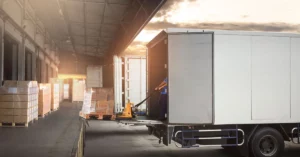Frost Protection for Roofs and Gutters: Utilizing Heating Cables
Frost and ice buildup on roofs and gutters can lead to significant damage and costly repairs. To mitigate these risks, many homeowners and businesses turn to heating cables. These innovative solutions effectively prevent ice dams, icicles, and related issues. In this article, we will explore the benefits of heating cables for frost protection and discuss their installation and maintenance.
Let’s Dig in!
Benefits of Heating Cables:
Heating cables offer several advantages when it comes to protecting roofs and gutters from frost and ice. Firstly, they ensure a constant, even heat distribution, preventing the formation of ice dams. Secondly, they minimize the risk of water infiltration, which can cause structural damage. Lastly, they help to prevent icicles, reducing the potential hazards they pose to people and property.
Installation Process:
Installing heating cables requires careful planning and execution. Begin by assessing the specific areas that need protection, such as roof edges, valleys, and gutters. Next, measure the length required for the cables and plan the power supply accordingly. Once the cables are in place, connect them to a thermostat or controller for efficient temperature regulation. Finally, conduct thorough testing to ensure proper functionality before the onset of winter.
Maintenance and Monitoring:
Regular maintenance is essential to maximize the effectiveness of heating cables. Inspect the cables annually, checking for any signs of wear or damage. Clean debris from gutters and ensure they are clear of any obstructions. Additionally, monitor the performance of the heating system throughout the winter months and make adjustments as needed to maintain optimal frost protection.
Furthermore, it is important to understand the various types of heating cables available in the market.
Types of Heating Cables:
1. Self-Regulating Cables: These cables automatically adjust their heat output based on the surrounding temperature, making them energy-efficient and cost-effective.
2. Constant-Wattage Cables: These cables provide a consistent heat output regardless of the temperature, offering reliable protection in extremely cold conditions.
Now let’s discuss the installation considerations and best practices for heating cables.
Installation Considerations and Best Practices:
1. Proper Cable Placement: Install heating cables along areas prone to ice and snow buildup, such as roof eaves, valleys, and gutters.
2. Electrical Safety: Ensure that the cables are installed by a qualified electrician, following local electrical codes and regulations.
3. Insulation: Properly insulate the attic and roof to minimize heat loss, enhancing the efficiency of the heating cables.
Lastly, let’s address some common concerns and misconceptions associated with heating cables.
Common Concerns and Misconceptions:
1. Energy Consumption: While heating cables do consume electricity, their usage is generally limited to when they are needed, making them energy-efficient compared to alternative methods of frost protection.
2. Roof Damage: When installed correctly and used according to manufacturer guidelines, heating cables do not cause damage to roofs or gutters.
More to find out!
Energy Efficiency:
Heating cables are energy-efficient. They typically operate only when necessary, automatically adjusting their heat output based on the surrounding temperature. This feature helps to minimize energy consumption and reduce heating costs.
Customizable Solutions:
Heating cables come in various lengths and configurations to suit different roof and gutter designs. You can tailor them to fit specific areas that are prone to frost and ice buildup, ensuring comprehensive protection.
Thermostat Control:
Incorporating a thermostat or controller into the heating cable system allows for precise temperature regulation. This feature ensures that the cables activate when needed and maintain an optimal temperature to prevent ice formation.
Snow Melting:
Some heating cables are designed not only to prevent ice dams but also to melt snow on roofs. These snow melting cables are installed under the roofing material and help to prevent excessive snow accumulation, reducing the risk of roof collapse.
Safety Considerations:
When installing heating cables, it is crucial to prioritize safety. Ensure that the cables are properly grounded and installed by a qualified electrician to comply with electrical codes and regulations. It is also important to follow the manufacturer’s instructions and guidelines for safe and effective installation.
Longevity and Durability:
High-quality heating cables are designed to withstand harsh weather conditions and have a long lifespan. They are typically made from materials that are resistant to UV radiation, moisture, and corrosion, ensuring durability and reliable performance over time.
Compatibility with Existing Systems: You can often use heating cables with existing roof and gutter systems without the need for extensive modifications. This makes them a convenient solution for retrofitting older buildings or adding frost protection to existing structures.
Professional Installation: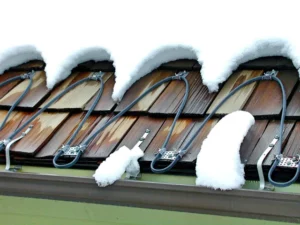
While some homeowners may opt for DIY installation, we recommend to consult with professionals who specialize in frost protection systems. They have the expertise to assess your specific needs, recommend the right heating cable solution, and ensure proper installation for optimal performance.
Remember….
regular maintenance and monitoring are key to ensuring the ongoing effectiveness of heating cables. Conduct routine inspections, particularly before the winter season, to identify any issues or damage that may affect the performance of the system. By following best practices and investing in quality heating cables, you can protect your roof and gutters from frost-related damage and enjoy a safer, more secure property during the winter months.
Conclusion:
Heating cables provide an effective solution for frost protection on roofs and gutters, preventing ice dams, icicles, and related damage. By understanding their benefits, proper installation, and maintenance practices, homeowners and businesses can safeguard their properties from the risks associated with winter weather. Consult with professionals to determine the most suitable heating cable system for your specific needs, ensuring a safe, reliable, and cost-effective frost protection solution.

